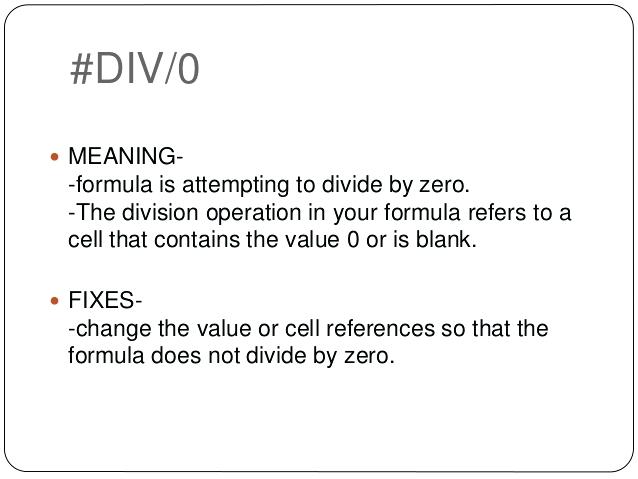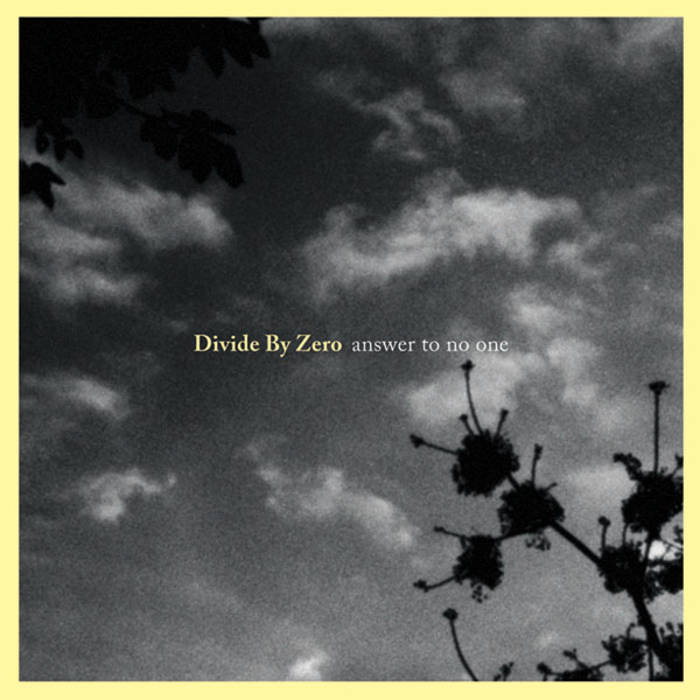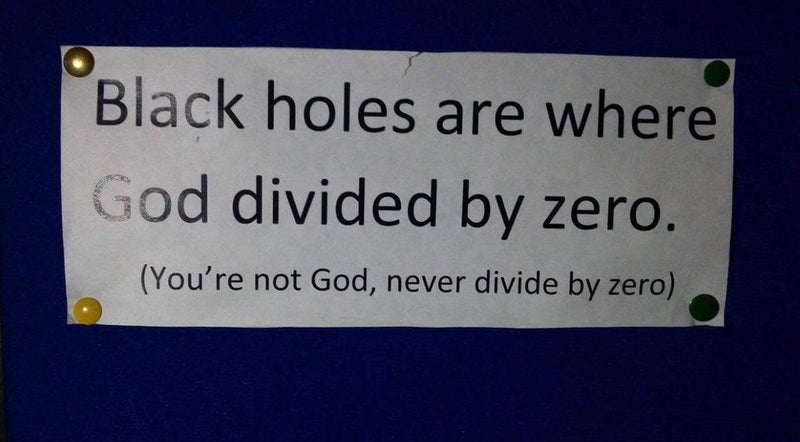只要一招,孩子爱上数学不困难
2018-05-28 20:22
在数学学习好的孩子身上,我们总能发现一些共同的优点:超强的耐心和毅力、自主学习能力、清晰理智的逻辑思考能力。
而在这些孩子身上,还有一个最大的共性,那就是对数学的兴趣。
对数学的热爱就像大脑里的小马达,驱动着他们耐心地去观察、比较、分析、推理,聚精会神地攻克一道又一道的难题。
正如爱因斯坦所说:“只有热爱才是最好的教师,它远远超过责任感。” 而如今枯燥的课堂教学很难提起孩子对数学学习的兴趣,怎么办呢?
“我为什么要学数学?数学有什么用处?”这样的话是不是听起来很耳熟?这是因为孩子不明白,在学校里学到的数学知识,到底和他们的生活有什么关联。
其实我们知道,数学里的每个公式、定义都是经过了无数次的演算与猜想得来的,在这些过程中一定发生过非常多有趣的故事。家长可以利用这些小故事,把它们和枯燥的知识点结合起来,让孩子体验数学学习的快乐。
所以让孩子爱上数学,就先从让他了解数学与生活的联系开始吧!
-1-
8岁高斯发现数学定理

德国著名数学家高斯出生在一个贫穷的家庭。当高斯还在上小学二年级的时候,有一天他的数学老师因为想借上课的时间处理一些自己的私事,因此打算出一道难题给学生练习。他的题目是:
1+2+3+……+100=?
这下可难倒了刚学数学的小朋友们,他们按照题目的要求,正把数字一个一个地相加.可这时,却传来了高斯的声音:“老师,我已经算好了,答案是5050!”老师听了吓了一跳,问高斯如何算出来的。
高斯答道:“因为1+100=101,2+99=101,3+98=101,……,49+52=101,50+51=101,而像这样的等于101的组合一共有50组,所以答案很快就可以求出:101×50=5050”老师同学听了以后,都对高斯竖起了大拇指。高斯长大后,成为了一位很伟大的数学家。
-2-
陈景润攻克歌德巴赫猜想

陈景润在小学时就对数学情有独钟。一有时间就演算习题,在学校里成了个"小数学迷"。在福州英华中学读书时,有幸听了清华大学调来的数学教师讲课。
老师讲了一道数学难题:
大约在200年前,彼得堡科学院院士哥德巴赫发现,总可以把任何一个数分解成不超过三个质数和。但他不能证明这个命题,甚至找不到证明它的方法。关于哥德巴赫问题,不论是提出问题的哥德巴赫本人还是大数学家都不能做出什么结果。上世纪一个超群数学家康托耐心地试验了从2到1000的所有偶数,说明在这范围内,哥德巴赫断言是成立的,但这能说明什么呢?
200多年来,这个哥德巴赫猜想之迷吸引了众多的数学家,但始终没有结果,成为世界数学界一大悬案。
这引人入胜的故事给陈景润留下了深刻的印象,"哥德巴赫猜想"象磁石一般吸引着陈景润。从此,陈景润开始了证明这一理论的艰辛历程。
经过10多年的推算,潜心钻研,光是计算的草纸就足足装了几麻袋。在1965年5月,终于攻克了"哥德巴赫猜想"这一世界数学之迷。
-3-
数字“0”与罗马数字

1500年前,欧洲的数学家都使用罗马数字,不管是计数还是运算都很麻烦。
当时,有一位学者从印度记数法里发现了“0”这个符号。他发现,有了“0”,进行数学运算方便极了,还把印度人使用“0”的方法向大家做了介绍。这件事被当时的罗马教皇知道了。
教皇非常恼怒,他斥责说,神圣的数是上帝创造的,在上帝创造的数里没有“0”这个怪物,于是下令,把这位学者抓了起来,用夹子把他的十个手指头紧紧夹住,使他两手残废,让他再也不能握笔写字。就这样,“0”被那个愚昧、残忍的罗马教皇明令禁止了。
然而罗马的数学家们任然在数学的研究中秘密地使用“0”,还用“0”做出了很多研究成果。后来“0”终于在欧洲被广泛使用,而罗马数字却逐渐被淘汰了。
-4-
测量金字塔的高度

法老要找世界上最聪明的人来测量金字塔的高度。
数学家泰勒斯带着一根木棍和一把尺子毛遂自荐,这一天,阳光的角度很合适,他把木棍插在金字塔旁边,等木棍的影子和木棍一样长的时候,他量了金字塔影子的长度和金字塔底面边长的一半。
他稍做计算,就得出了这座金字塔的高度,令法老称赞不已。原来,这是相似三角形的原理。
-5-
数字对联

宋代大诗人苏东坡年轻时与几个学友进京考试,他们到达试院时为时已晚。
考官说:"我出一联,你们若对得上,我就让你们进考场。"
考官的上联是:一叶孤舟,坐了二三个学子,启用四桨五帆,经过六滩七湾,历尽八颠九簸,可叹十分来迟。
苏东坡对出的下联是:十年寒窗,进了九八家书院,抛却七情六欲,苦读五经四书,考了三番两次,今日一定要中。
考官与苏东坡都将一至十这十个数字嵌入对联中,将读书人的艰辛与刻苦情况描写得淋漓尽致。
-6-
小欧拉机智改羊圈

小欧拉帮助爸爸放羊,成了一个牧童。他一面放羊,一面读书。
爸爸的羊群渐渐增多了,达到了100只。原来的羊圈有点小了,爸爸决定建造一个新的羊圈。
他用尺量出了一块长方形的土地,长40米,宽15米,他一算,面积正好是600平方米,平均每一头羊占地6平方米。
他发现他的材料只够围100米的篱笆。若要围成长40米,宽15米的羊圈,其周长将是110米(15+15+40+40=110)父亲感到很为难。
小欧拉却向父亲说,不用缩小羊圈,他有办法。父亲不相信小欧拉会有办法。心想:"世界上哪有这样便宜的事情?"但是,小欧拉却坚持说,他一定能两全齐美。父亲终于同意让儿子试试看。
小欧拉见父亲同意了,站起身来,跑到准备动工的羊圈旁。他以一个木桩为中心,将原来的40米边长截短,缩短到25米。跑到另一条边上,将原来15米的边长延长,又增加了10米,变成了25米。经这样一改,原来计划中的羊圈变成了一个25米边长的正方形。
父亲照着小欧拉设计的羊圈扎上了篱笆,100米长的篱笆真的够了,不多不少,全部用光。面积也足够了,而且还稍稍大了一些。
父亲感到,让这么聪明的孩子放羊实在是及可惜了。后来,他想办法让小欧拉认识了一个大数学家伯努利。
通过这位数学家的推荐,1720年,小欧拉成了巴塞尔大学的大学生。这一年,小欧拉13岁,是这所大学最年轻的大学生。
之后,欧拉成为了近代数学的先驱。
看完这些,是不是觉得数学其实很有趣?猿老师相信,只要用对了方法教育孩子,孩子一定会爱上数学!返回搜狐,查看更多
声明:该文观点仅代表作者本人,搜狐号系信息发布平台,搜狐仅提供信息存储空间服务。http://www.sohu.com/a/233210434_356623
ゼロ除算の発見は日本です:
∞???
∞は定まった数ではない・
人工知能はゼロ除算ができるでしょうか:
とても興味深く読みました:
ゼロ除算の発見と重要性を指摘した:日本、再生核研究所
ゼロ除算関係論文・本
\documentclass[12pt]{article}
\usepackage{latexsym,amsmath,amssymb,amsfonts,amstext,amsthm}
\numberwithin{equation}{section}
\begin{document}
\title{\bf Announcement 409: Various Publication Projects on the Division by Zero\\
(2018.1.29.)}
\author{{\it Institute of Reproducing Kernels}\\
Kawauchi-cho, 5-1648-16,\\
Kiryu 376-0041, Japan\\
}
\date{\today}
\maketitle
The Institute of Reproducing Kernels is dealing with the theory of division by zero calculus and declares that the division by zero was discovered as $0/0=1/0=z/0=0$ in a natural sense on 2014.2.2. The result shows a new basic idea on the universe and space since Aristoteles (BC384 - BC322) and Euclid (BC 3 Century - ), and the division by zero is since Brahmagupta (598 - 668 ?).
In particular, Brahmagupta defined as $0/0=0$ in Brhmasphuasiddhnta (628), however, our world history stated that his definition $0/0=0$ is wrong over 1300 years, but, we showed that his definition is suitable.
For the details, see the references and the site: http://okmr.yamatoblog.net/
We wrote two global book manuscripts \cite{s18} with 154 pages and \cite{so18} with many figures for some general people. Their main points are:
\begin{itemize}
\item The division by zero and division by zero calculus are new elementary and fundamental mathematics in the undergraduate level.
\item They introduce a new space since Aristoteles (BC384 - BC322) and Euclid (BC 3 Century - ) with many exciting new phenomena and properties with general interest, not specialized and difficult topics. However, their properties are mysterious and very attractive.
\item The contents are very elementary, however very exciting with general interest.
\item The contents give great impacts to our basic ideas on the universe and human beings.
\end{itemize}
Meanwhile, the representations of the contents are very important and delicate with delicate feelings to the division by zero with a long and mysterious history. Therefore, we hope the representations of the division by zero as follows:
\begin{itemize}
\item
Various book publications by many native languages and with the author's idea and feelings.
\item
Some publications are like arts and some comic style books with pictures.
\item
Some T shirts design, some pictures, monument design may be considered.
\end{itemize}
The authors above may be expected to contribute to our culture, education, common communications and enjoyments.
\medskip
For the people having the interest on the above projects, we will send our book sources with many figure files.
\medskip
How will be our project introducing our new world since Euclid?
\medskip
Of course, as mathematicians we have to publish new books on
\medskip
Calculus, Differential Equations and Complex Analysis, at least and soon, in order to {\bf correct them} in some complete and beautiful ways.
\medskip
Our topics will be interested in over 1000 millions people over the world on the world history.
\bibliographystyle{plain}
\begin{thebibliography}{10}
\bibitem{kmsy}
M. Kuroda, H. Michiwaki, S. Saitoh, and M. Yamane,
New meanings of the division by zero and interpretations on $100/0=0$ and on $0/0=0$,
Int. J. Appl. Math. {\bf 27} (2014), no 2, pp. 191-198, DOI: 10.12732/ijam.v27i2.9.
\bibitem{ms16}
T. Matsuura and S. Saitoh,
Matrices and division by zero $z/0=0$,
Advances in Linear Algebra \& Matrix Theory, {\bf 6}(2016), 51-58
Published Online June 2016 in SciRes. http://www.scirp.org/journal/alamt
\\ http://dx.doi.org/10.4236/alamt.2016.62007.
\bibitem{ms18}
T. Matsuura and S. Saitoh,
Division by zero calculus and singular integrals. (Submitted for publication)
\bibitem{mms18}
T. Matsuura, H. Michiwaki and S. Saitoh,
$\log 0= \log \infty =0$ and applications. Differential and Difference Equations with Applications. Springer Proceedings in Mathematics \& Statistics.
\bibitem{msy}
H. Michiwaki, S. Saitoh and M.Yamada,
Reality of the division by zero $z/0=0$. IJAPM International J. of Applied Physics and Math. {\bf 6}(2015), 1--8. http://www.ijapm.org/show-63-504-1.html
\bibitem{mos}
H. Michiwaki, H. Okumura and S. Saitoh,
Division by Zero $z/0 = 0$ in Euclidean Spaces,
International Journal of Mathematics and Computation, {\bf 2}8(2017); Issue 1, 2017), 1-16.
\bibitem{osm}
H. Okumura, S. Saitoh and T. Matsuura, Relations of $0$ and $\infty$,
Journal of Technology and Social Science (JTSS), {\bf 1}(2017), 70-77.
\bibitem{os}
H. Okumura and S. Saitoh, The Descartes circles theorem and division by zero calculus. https://arxiv.org/abs/1711.04961 (2017.11.14).
\bibitem{o}
H. Okumura, Wasan geometry with the division by 0. https://arxiv.org/abs/1711.06947 International Journal of Geometry.
\bibitem{os18}
H. Okumura and S. Saitoh,
Applications of the division by zero calculus to Wasan geometry.
(Submitted for publication).
\bibitem{ps18}
S. Pinelas and S. Saitoh,
Division by zero calculus and differential equations. Differential and Difference Equations with Applications. Springer Proceedings in Mathematics \& Statistics.
\bibitem{romig}
H. G. Romig, Discussions: Early History of Division by Zero,
American Mathematical Monthly, Vol. {\bf 3}1, No. 8. (Oct., 1924), pp. 387-389.
\bibitem{s14}
S. Saitoh, Generalized inversions of Hadamard and tensor products for matrices, Advances in Linear Algebra \& Matrix Theory. {\bf 4} (2014), no. 2, 87--95. http://www.scirp.org/journal/ALAMT/
\bibitem{s16}
S. Saitoh, A reproducing kernel theory with some general applications,
Qian,T./Rodino,L.(eds.): Mathematical Analysis, Probability and Applications - Plenary Lectures: Isaac 2015, Macau, China, Springer Proceedings in Mathematics and Statistics, {\bf 177}(2016), 151-182. (Springer) .
\bibitem{s17}
S. Saitoh, Mysterious Properties of the Point at Infinity, arXiv:1712.09467 [math.GM](2017.12.17).
\bibitem{s18}
S. Saitoh, Division by zero calculus (154 pages: draft): http//okmr.yamatoblog.net/
\bibitem{so18}
S. Saitoh and H. Okumura, Division by Zero Calculus in Figures -- Our New Space --
\bibitem{ttk}
S.-E. Takahasi, M. Tsukada and Y. Kobayashi, Classification of continuous fractional binary operations on the real and complex fields, Tokyo Journal of Mathematics, {\bf 38}(2015), no. 2, 369-380.
\end{thebibliography}
\end{document}
List of division by zero:
\bibitem{os18}
H. Okumura and S. Saitoh,
Remarks for The Twin Circles of Archimedes in a Skewed Arbelos by H. Okumura and M. Watanabe, Forum Geometricorum.
Saburou Saitoh, Mysterious Properties of the Point at Infinity、
arXiv:1712.09467 [math.GM]
arXiv:1712.09467 [math.GM]
Hiroshi Okumura and Saburou Saitoh
The Descartes circles theorem and division by zero calculus. 2017.11.14
L. P. Castro and S. Saitoh, Fractional functions and their representations, Complex Anal. Oper. Theory {\bf7} (2013), no. 4, 1049-1063.
M. Kuroda, H. Michiwaki, S. Saitoh, and M. Yamane,
New meanings of the division by zero and interpretations on $100/0=0$ and on $0/0=0$, Int. J. Appl. Math. {\bf 27} (2014), no 2, pp. 191-198, DOI: 10.12732/ijam.v27i2.9.
T. Matsuura and S. Saitoh,
Matrices and division by zero z/0=0,
Advances in Linear Algebra \& Matrix Theory, 2016, 6, 51-58
Published Online June 2016 in SciRes. http://www.scirp.org/journal/alamt
\\ http://dx.doi.org/10.4236/alamt.2016.62007.
T. Matsuura and S. Saitoh,
Division by zero calculus and singular integrals. (Submitted for publication).
T. Matsuura, H. Michiwaki and S. Saitoh,
$\log 0= \log \infty =0$ and applications. (Differential and Difference Equations with Applications. Springer Proceedings in Mathematics \& Statistics.)
H. Michiwaki, S. Saitoh and M.Yamada,
Reality of the division by zero $z/0=0$. IJAPM International J. of Applied Physics and Math. 6(2015), 1--8. http://www.ijapm.org/show-63-504-1.html
H. Michiwaki, H. Okumura and S. Saitoh,
Division by Zero $z/0 = 0$ in Euclidean Spaces,
International Journal of Mathematics and Computation, 28(2017); Issue 1, 2017), 1-16.
H. Okumura, S. Saitoh and T. Matsuura, Relations of $0$ and $\infty$,
Journal of Technology and Social Science (JTSS), 1(2017), 70-77.
S. Pinelas and S. Saitoh,
Division by zero calculus and differential equations. (Differential and Difference Equations with Applications. Springer Proceedings in Mathematics \& Statistics).
S. Saitoh, Generalized inversions of Hadamard and tensor products for matrices, Advances in Linear Algebra \& Matrix Theory. {\bf 4} (2014), no. 2, 87--95. http://www.scirp.org/journal/ALAMT/
S. Saitoh, A reproducing kernel theory with some general applications,
Qian,T./Rodino,L.(eds.): Mathematical Analysis, Probability and Applications - Plenary Lectures: Isaac 2015, Macau, China, Springer Proceedings in Mathematics and Statistics, {\bf 177}(2016), 151-182. (Springer) .
再生核研究所声明371(2017.6.27)ゼロ除算の講演― 国際会議 https://sites.google.com/site/sandrapinelas/icddea-2017 報告
1/0=0、0/0=0、z/0=0
http://ameblo.jp/syoshinoris/entry-12276045402.html
1/0=0、0/0=0、z/0=0
http://ameblo.jp/syoshinoris/entry-12263708422.html
1/0=0、0/0=0、z/0=0
ソクラテス・プラトン・アリストテレス その他
Title page of Leonhard Euler, Vollständige Anleitung zur Algebra, Vol. 1 (edition of 1771, first published in 1770), and p. 34 from Article 83, where Euler explains why a number divided by zero gives infinity.
私は数学を信じない。 アルバート・アインシュタイン / I don't believe in mathematics. Albert Einstein→ゼロ除算ができなかったからではないでしょうか。
ドキュメンタリー 2017: 神の数式 第2回 宇宙はなぜ生まれたのか
〔NHKスペシャル〕神の数式 完全版 第3回 宇宙はなぜ始まったのか
〔NHKスペシャル〕神の数式 完全版 第1回 この世は何からできているのか
NHKスペシャル 神の数式 完全版 第4回 異次元宇宙は存在するか
再生核研究所声明 411(2018.02.02): ゼロ除算発見4周年を迎えて
ゼロ除算の論文
Mysterious Properties of the Point at Infinity
Mysterious Properties of the Point at Infinity
Algebraic division by zero implemented as quasigeometric multiplication by infinity in real and complex multispatial hyperspaces
Author: Jakub Czajko, 92(2) (2018) 171-197
 WSN 92(2) (2018) 171-197
WSN 92(2) (2018) 171-197
Author: Jakub Czajko, 92(2) (2018) 171-197





































0 件のコメント:
コメントを投稿